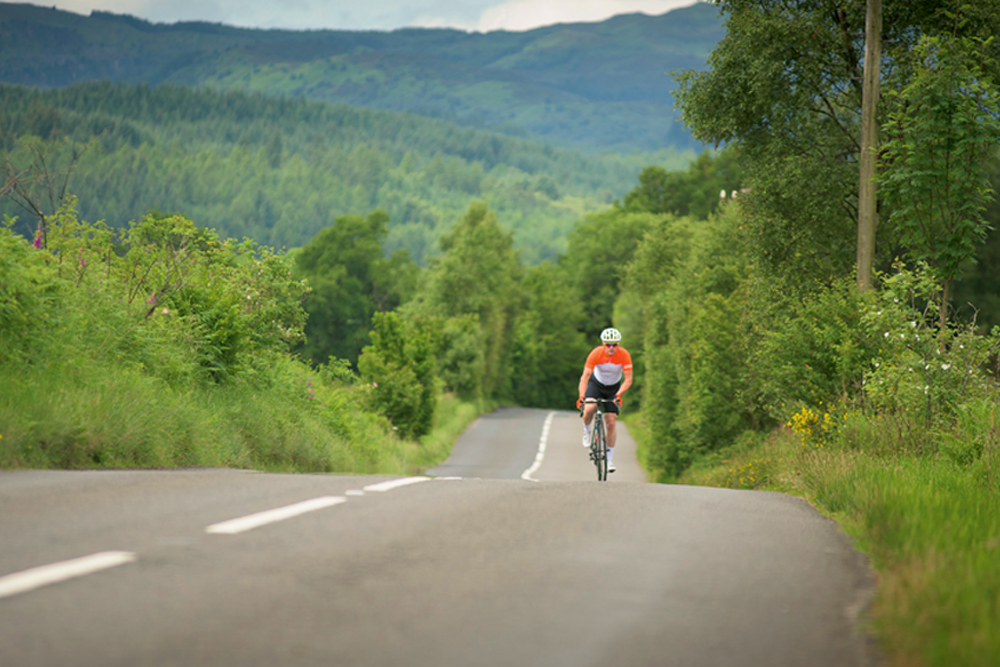How to ride an undulating gradient
Most climbs have changes in gradient, but what’s the fastest way to get to the top? Vicky Ware investigates

Should you focus on going harder on the steep sections or the flatter sections of an undulating road? And would you even know if you were pushing too hard when the going gets steep? The 2014 national hill-climb champion Maryka Sennema shares her advice.
“Most people get more power out on the steeper bits and less on flatter bits, but to what extent you do that relates to the type of rider you are,” she explains. “A punchy rider will probably do better with an uneven effort, putting out substantially more power on steeper bits and recovering on flatter bits.”
>>> Maryka Sennema is featured in our Kings and Queens of Strava
Pacing is also key, Sennema explains: “I usually hold back in the first part and try to finish strong. My first hill-climb was a seven-minute climb where I set a five-minute power record — in the first five minutes! Ouch. I completely underestimated the influence of the start line adrenaline for
that one.”
Conquer any ascent
You can avoid this by setting off at a pace that feels too easy — it will probably still be slightly too hard.
Get The Leadout Newsletter
The latest race content, interviews, features, reviews and expert buying guides, direct to your inbox!
Training with a power meter can help you find the best hill-climbing strategy. Whether that means easing off and getting some level of recovery on flatter bits then pushing on again when the going gets steep, or maintaining a steady power, depends on your strengths as a rider.
The essentials
- Know your style — punchy or even effort?
- Pace yourself
- Know the climb
- Use a power meter
- Train specifically for the type of hill
Sennema says: “Having a power meter definitely helps, as it can tell you if you’re going out too hard or taking it too easy in the middle or on flatter sections — but only if you know yourself well enough to know what you’re capable of!”
>>> Find your perfect pace to optimise cycling performance
Pacing up a climb is an often neglected skill and many get it wrong. If you master it you’ll certainly
notice when riding in a group that your pacing tactics are working.
Sennema has found this to be the case: “Most people tend to go out too hard on climbs, and as such I’m often being forced to work very hard or even get dropped at the bottom. But if I can just hang on, I’m rewarded when they fade in the second half and I can steam past looking strong!”
How much difference does weight really make?
Key points
If you’re looking to do well in a hill-climb, get to know the gradient of the climb so you can train effectively. If you can’t visit before race day, have a look at the Strava segment.
Adapt your training to the way you want to climb. Punchy efforts require the ability to recover quickly — do short intervals with short recoveries. If riding an even pace, train to keep power output stable.
Ride with a power meter, even if this means renting one, to get an idea of how your power output varies with gradient. You might find a less punchy style gets you to the top faster.
Studies have shown that standing while climbing could increase the amount of power you can output for a given amount of lactate produced — but to do this effectively you need to train out of the saddle and work on your core strength.
How do you compare?
As you approach a climb use your momentum from the descent or run-up leading into it and anticipate the need to change gears.
Don’t set off too hard. It’s really tempting to go too hard at the foot of a climb, especially if this is the steepest bit, and pay for it later. This is definitely not the fastest way to get to the top.
Change gears to maintain an even cadence. Don’t struggle to push too big a gear.

Thank you for reading 20 articles this month* Join now for unlimited access
Enjoy your first month for just £1 / $1 / €1
*Read 5 free articles per month without a subscription

Join now for unlimited access
Try first month for just £1 / $1 / €1
-
 Trek, State and Specialized raise bike prices while other brands limit US releases — Is this just the beginning?
Trek, State and Specialized raise bike prices while other brands limit US releases — Is this just the beginning?As tariffs hit, the bike industry is forced to adapt, whether through price increases, limited releases, or a restructuring of supply chains
By Anne-Marije Rook
-
 How I got my non-cyclist friend hooked on riding bikes — and how you can, too
How I got my non-cyclist friend hooked on riding bikes — and how you can, tooWith a little bit of gentle guidance, “bikes aren’t my thing” can turn into “when’s our next ride?”
By Marley Blonsky